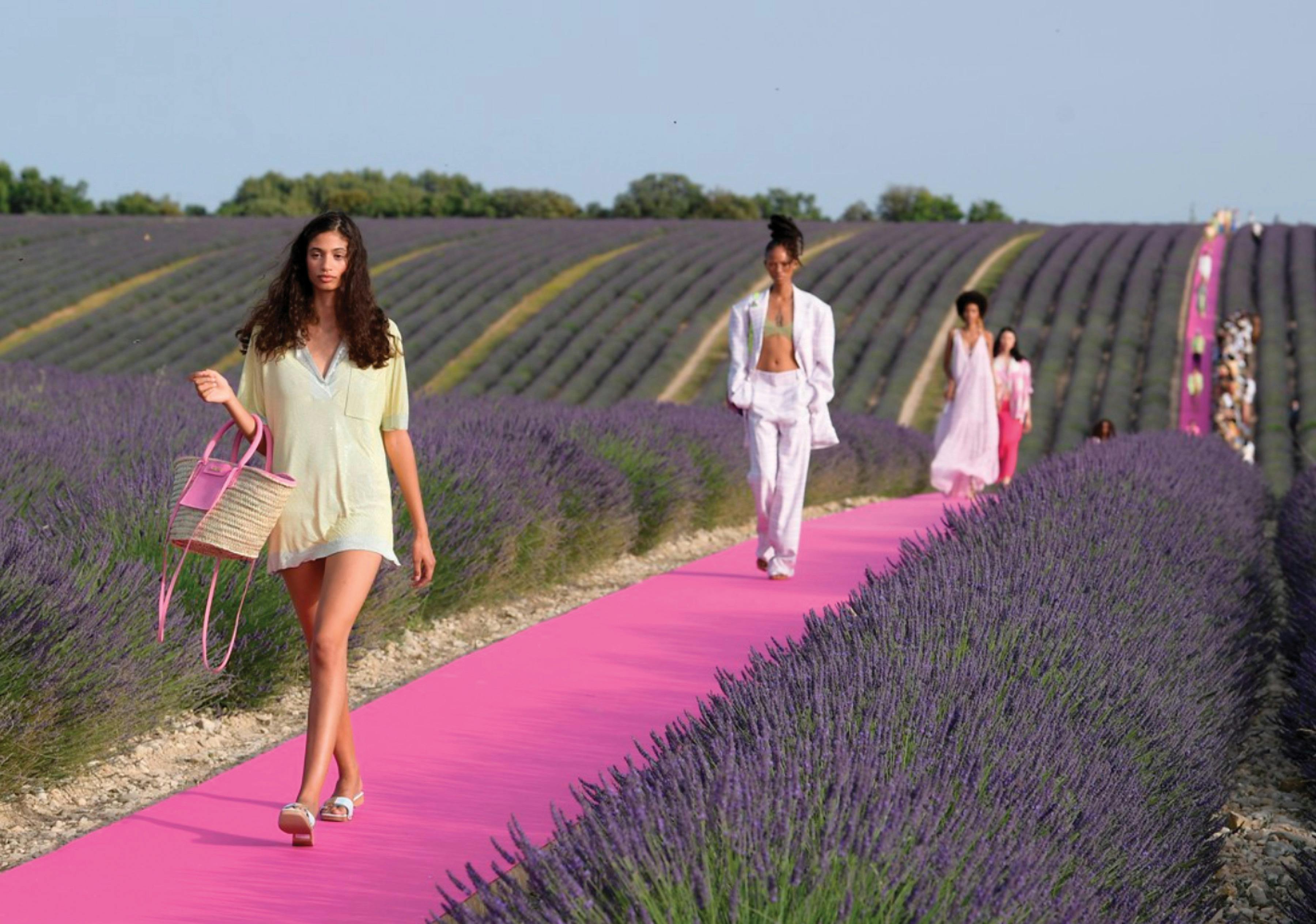0 minute read
Does a Viral Runway Moment Equal Fashion Week Success?
Designers and show producers are striving to present a great collection - and a buzzworthy moment that will take off on TikTok.
Published: October 2022
Origin: Australia
I wasn’t at Paris Fashion Week.
But the number of clips that sprawled across my TikTok of Bella Hadid being sprayed into a Coperni dress made me feel like I was.
During fashion month, I was immersed in the eclectic fits and glam from New York to Paris all from the comfort of my iPhone screen. Hot pink, vibrant orange and sequins all appeared to be trending styles, but a common thread I noticed was the need to design a runway that could go viral.
In 1999, Alexander McQueen had robots splatter paint across a model mid-runway. The 2010s saw celebrities like Justin Bieber and Lady Gaga perform at Victoria Secret shows.
Creating a ‘moment’ in runways may not be a new phenomenon, but the rise of TikTok and rapid technology advancements have encouraged social media to flourish. So, it seems that in the 21st century creating a ‘shareable’ fashion show is more crucial than ever.
This year’s Melbourne Fashion Week delivered, and in my eyes was also designed to generate online hype. At every show audience members were whipping out their phones to capture the bold colours and unique drapes of fabric.
While the shows celebrated Australian fashion, it felt that designers and show producers wanted to present a great collection and create a viral ‘moment’.
Underneath the Bolte Bridge with skyline city views, the Queen Victoria Markets and the State Library were a few of this year’s remarkable locations. Clearly, this year’s spots were elevated from the times when Melbourne runways were held at the Exhibition Centre, but the place wasn’t the only factor to attract online appeal.
Starting the runway on a high or having some kind of midway act was a common theme throughout this year's runways. The Art X Fashion show at the State Library had opera singer Shauntai Batzke perform alongside a didgeridoo player while a model was dressed in a dramatic J'Aton Couture gown.
Similarly, a dancer and poet performed mid-way through the Dockside runway and the Student Runway had people sewing onstage throughout the duration of the runway.
The closing runway was no different. Aussie star Thelma Plum opened the final show singing Homecoming Queen while models wandered in rococo-style Nevenka dresses through the granite columns and arches of The Dome.
This year’s series of fashion week events appeared to be tailored for social media more than any other runway series I’ve been to.
Melbourne Fashion Week showcased some of the city’s greatest creative talent while simultaneously allowing time for a half-time stunt.
The pre and post-show antics were no different, with numerous photographers and videographers snapping the best-dressed influencers and street style.
It was clear the event producers wanted to both hook the audience and entice them to post content online. Which had me wondering – does a runway’s success go hand in hand with virality?
In a world of likes, saves and shares–social media has become a fundamental tool for brands and fashion houses alike. Now, the gatekeepers of fashion trends aren’t solely designers and retailers, but rather the millions of users online.
Tiktok and Instagram both have approximately one billion monthly users, which shows the potential reach a video can have, in comparison to the thousand or so people that can fit in a runway audience.
I always think the clothes will be the centre of attention, yet, I think designers will creatively present their looks in a clickbait-y way that drives a viral moment.
When a post is buzzworthy – this generates tons of traction for the brand which often translates into sales.
On the surface level, it may appear that runway producers are trying to whip out all the tricks with aim of becoming Insta or TikTok famous.
However, in reality, driving online content is one of the biggest marketing tools for a label. A prime example is Jaquemeus, who practically broke the internet with recent shows located in salt mountains and lavender fields. The result? Now everyone wants one of his Le Chiquito bags.

Not only does showcasing content online have the potential to show millions of your brand – it also opens the market to them. I say bring on the frivolous frocks and vivacious acts.
There’s a lot of politics in fashion and it can totally encourage change, but it also looks good – something social media algorithms love. After all, when fashion intertwines its music, design and art counterparts, it is only supporting the Australian creative industry.
And if it looks good on video – it probably looks ten times better in real life.
Amanda Gunn
Share